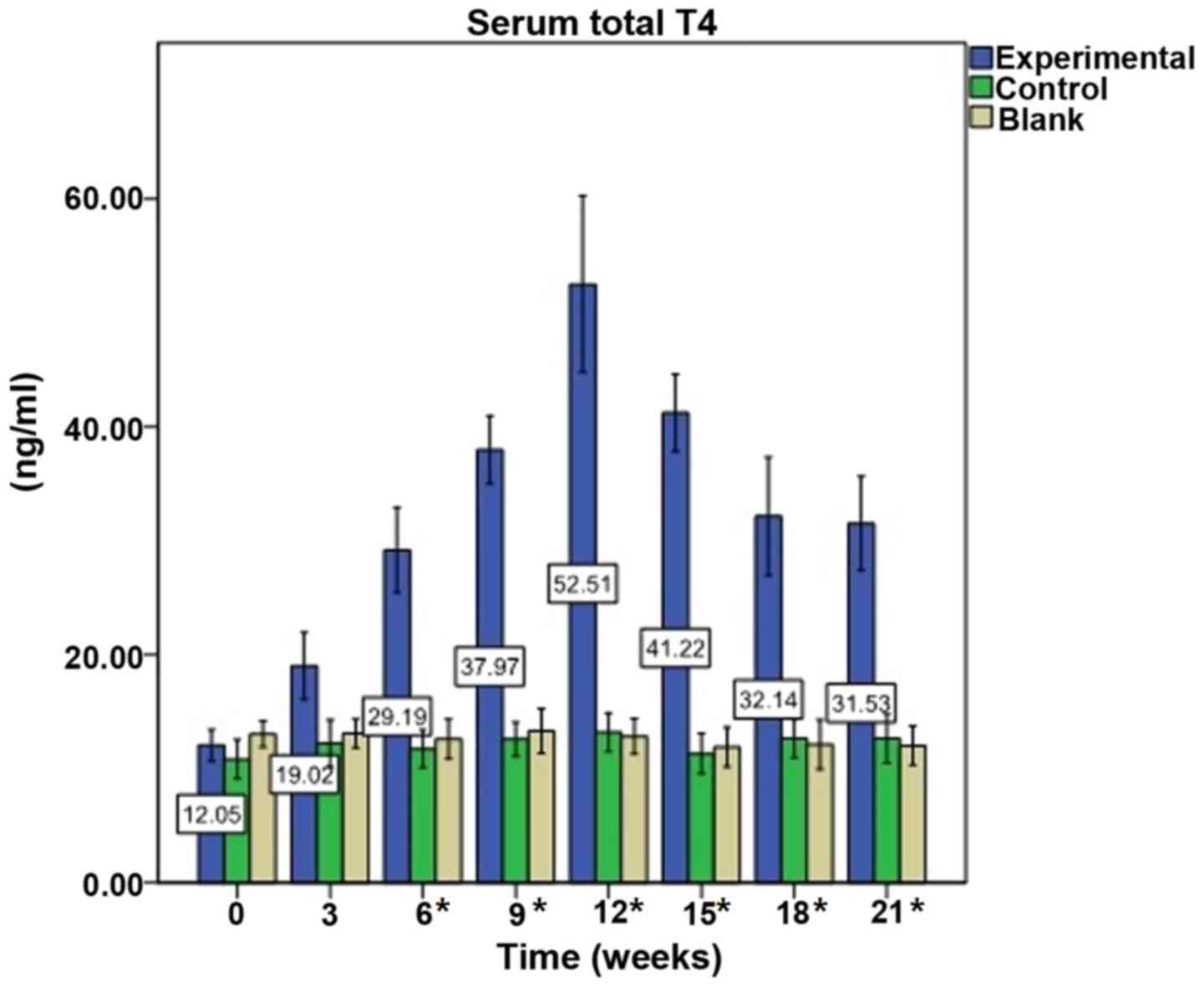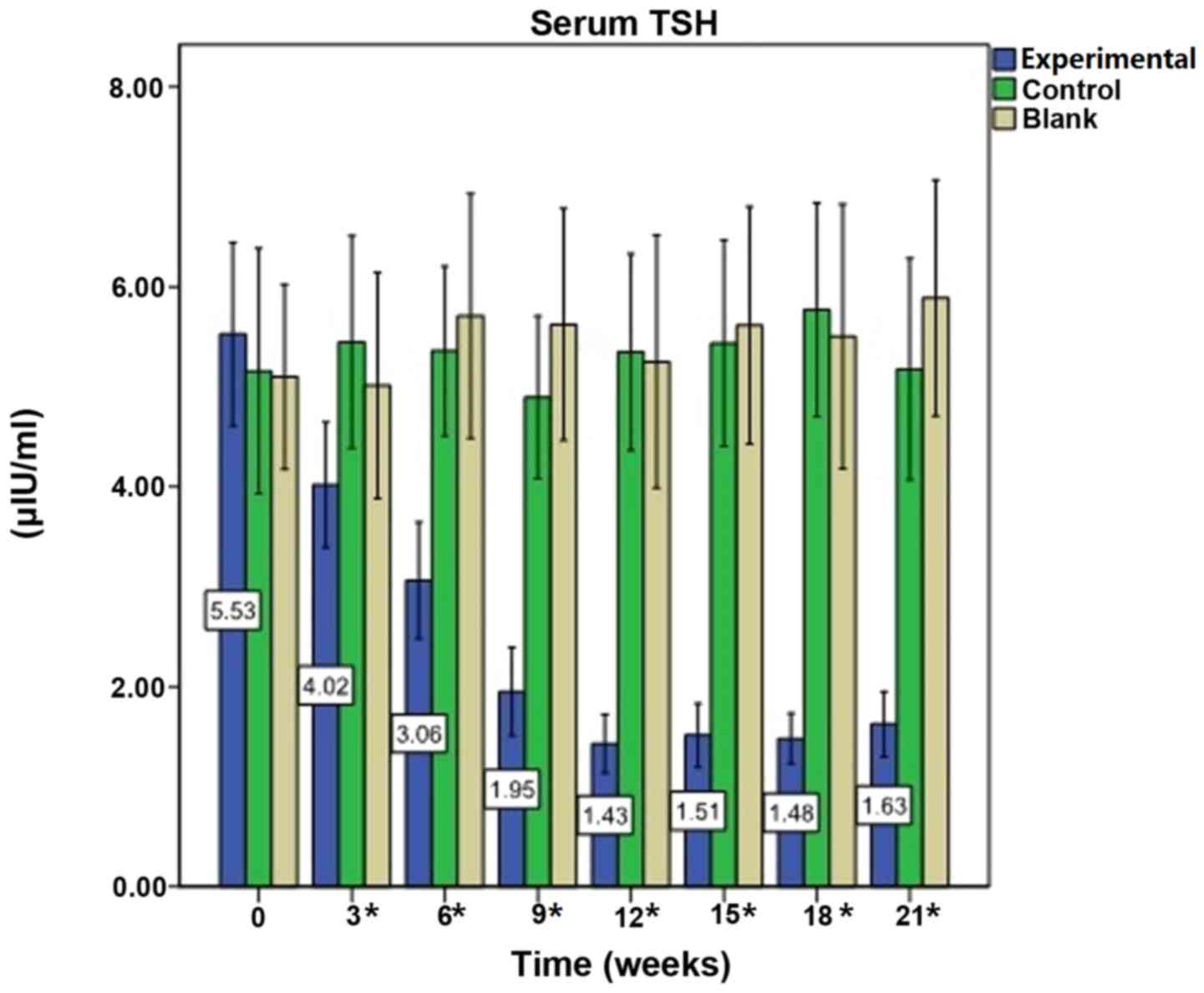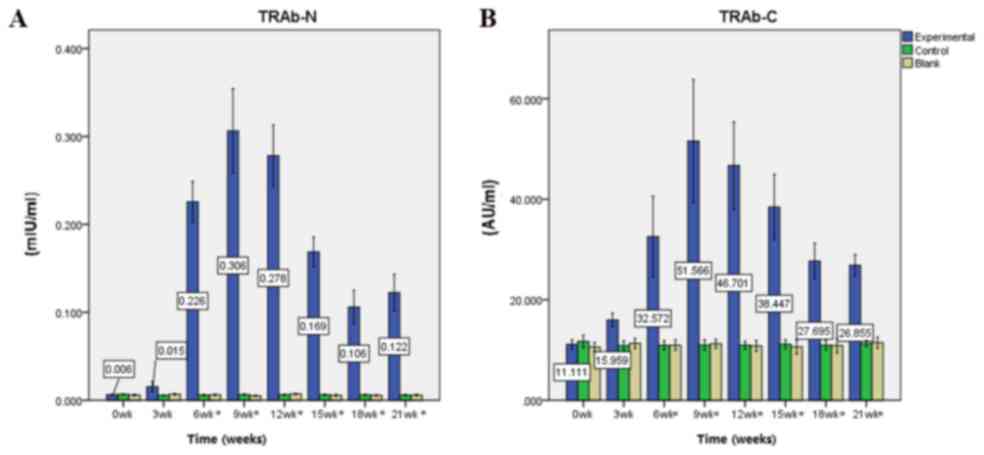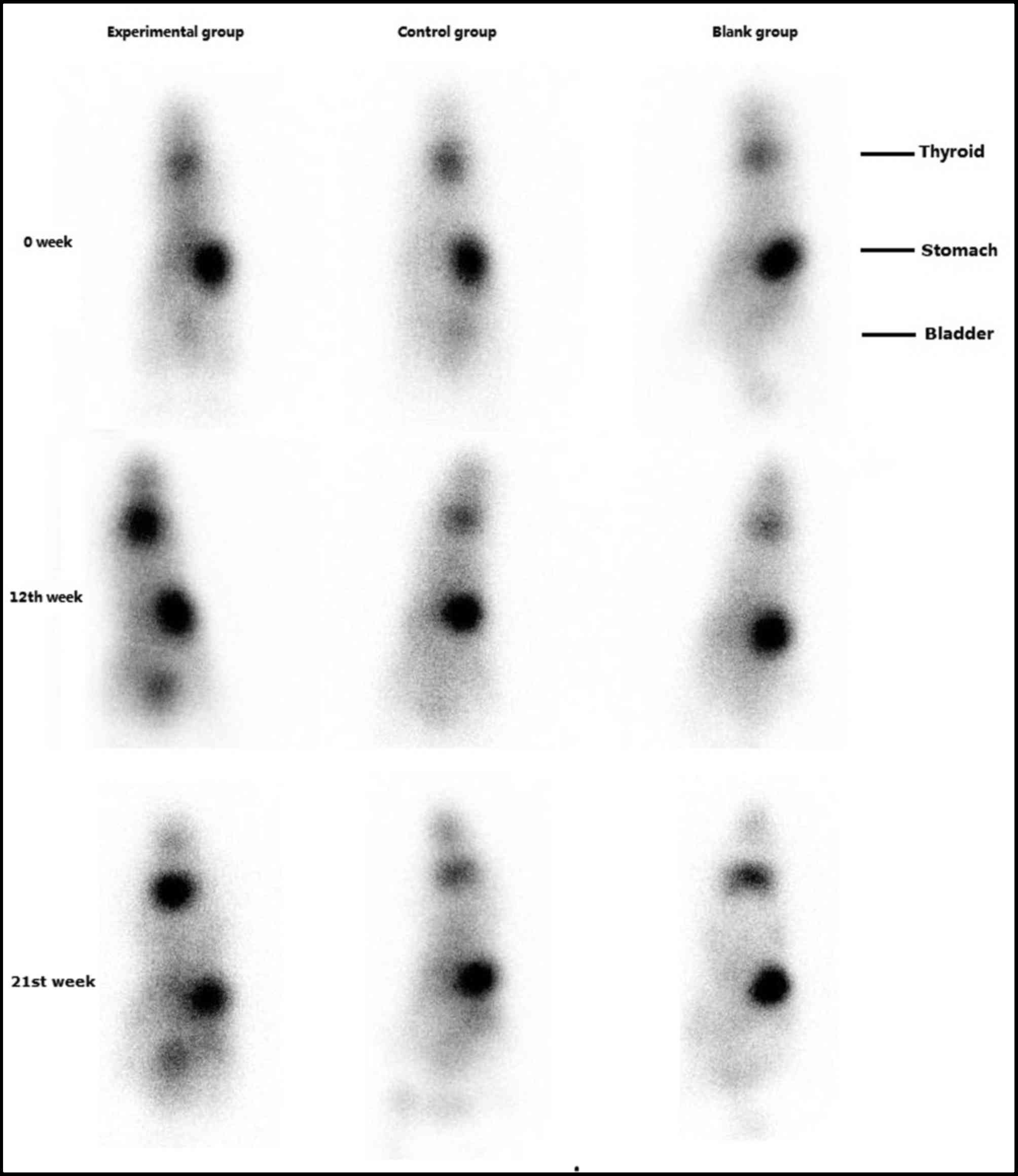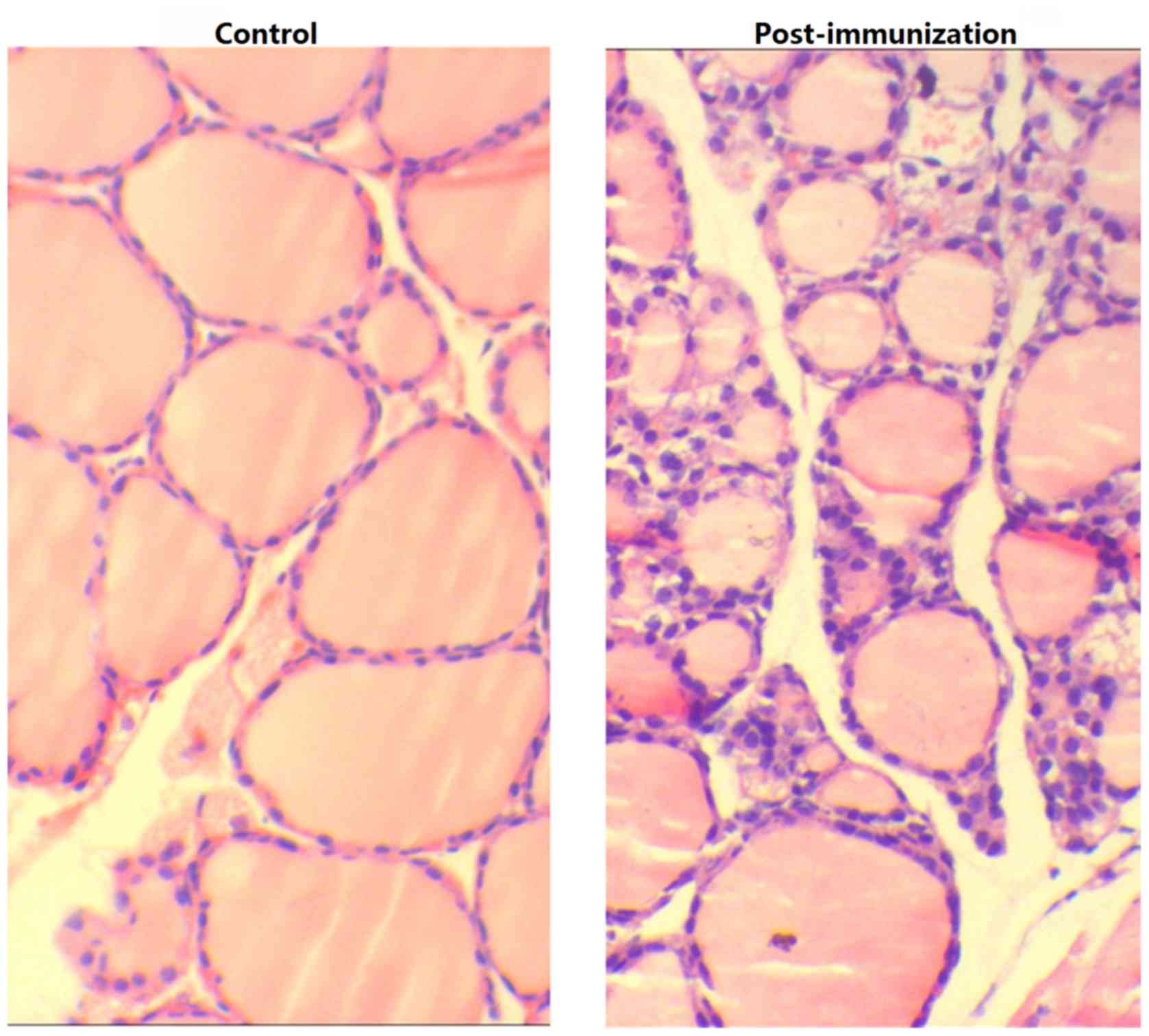An improved method for the establishment of a model of Graves' disease in BALB/c mice
- Authors:
- Published online on: February 8, 2017 https://doi.org/10.3892/mmr.2017.6181
- Pages: 1471-1478
-
Copyright: © Zheng et al. This is an open access article distributed under the terms of Creative Commons Attribution License.
Metrics: Total
Views: 0 (Spandidos Publications: | PMC Statistics: )
Total PDF Downloads: 0 (Spandidos Publications: | PMC Statistics: )
Abstract
The present study aimed to develop a stable Graves' disease (GD) model in BALB/c mice by immunization and electroporation (EP). A total of 90 mice were divided into experimental (n=50), control (n=20) and blank (n=20) groups. The recombinant plasmid pcDNA3.1/thyroid‑stimulating hormone (TSH) receptor 268 was constructed and injected into the bilateral gastrocnemius of experimental group mice at weeks 1, 4, 7 and 10. Equal volumes of saline were injected into the control and blank groups at the same time. The experimental and control groups were subjected to EP at the same time and location to enhance immunization. The levels of total serum thyroxine (T4) and serum TSH were examined by radioimmunoassay and immunoradiometric assay, respectively. The levels of serum thyrotropin receptor N‑terminal (TRAb N) and C‑terminal (TRAb C) antibodies were assessed by ELISA. Whole body pertechnetate (99mTcO4‑) imaging was performed. Mouse weight and thyroid morphology and pathology were analyzed. The GD BALB/c mouse model was successfully established, with a positive rate of 79.17% (38/48). T4 levels increased from baseline levels of 12.05±4.23 to 52.51±23.58 ng/ml by week 12 (P<0.0001). TSH levels decreased from baseline levels of 5.53±2.78 to 1.43±0.89 µIU/ml by week 12 (P<0.0001). TRAb N antibody levels increased from baseline levels of 0.006±0.002 to 0.278±0.106 mIU/ml by week 12 (P<0.0001). TRAb C antibody levels increased from baseline levels of 11.111±2.808 to 46.701±26.436 arbitrary units/ml by week 12 (P<0.0001). At week 21, TSH levels remained reduced compared with pre‑immunization levels (P<0.0001). Although T4, and TRAb N and C levels decreased, they remained increased compared with preimmunization levels (P<0.0001, P<0.0001, P=0.001). There were no significant alterations in antibody levels between the control and blank groups. Following four immunizations, the uptake of 99mTcO4‑ by the thyroid was significantly increased in the experimental group. The mean weight of the experimental mice was significantly reduced compared with the control and blank groups (all P<0.0001). Furthermore, the thyroid glands of the immunized mice were enlarged and exhibited lymphocyte infiltration, fewer colloid nodules and an increased height of epithelial cells. In conclusion, by injecting recombinant plasmid pcDNA3.1/TSHR268 and EP, a GD mouse model was successfully established.



